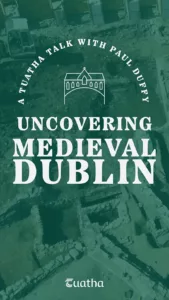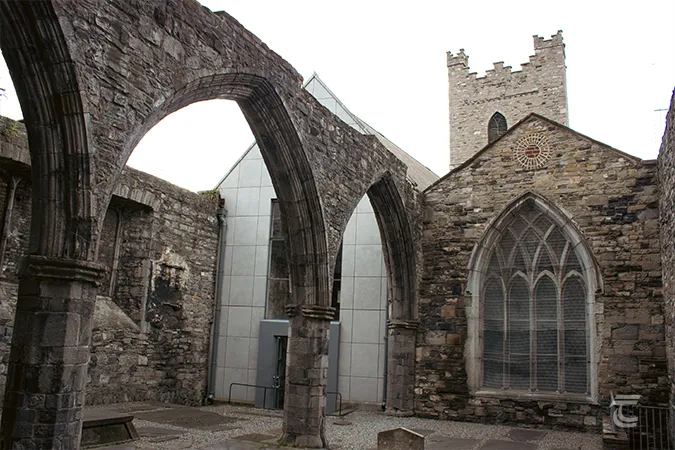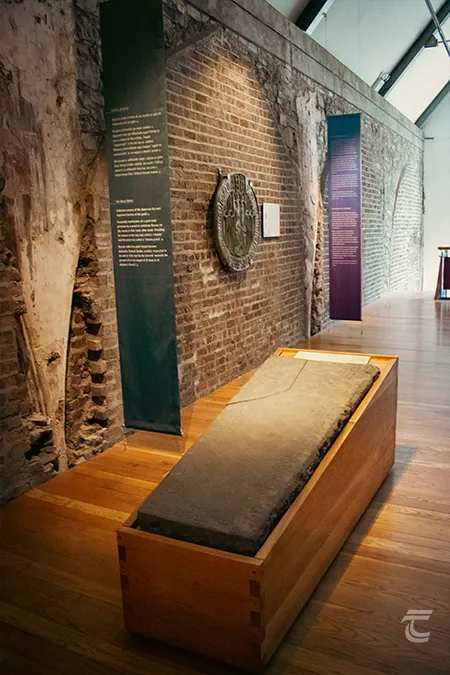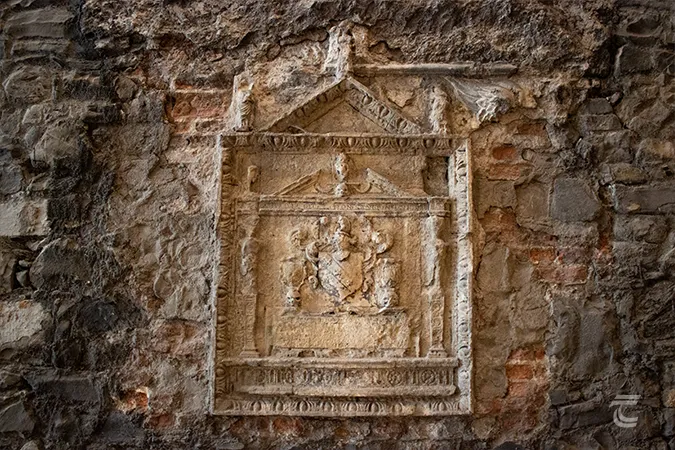St Audoen’s Church
Medieval Dublin differed from many other European urban centres of the same period, in that there were fewer parish churches and monasteries within the town than in the hinterland immediately outside the walls. This is perhaps explained by the city’s Viking origins, but there are still a number of notable and significant places of worship that survive from medieval Dublin, including St. Audoen’s Church.
Constructed at the western side of medieval Dublin, St Audoen’s Church dates to the late 12th century. Though a 9th century graveslab was found on the site, perhaps indicating that St Audoen’s may stand on the site of an earlier church. The church was dedicated to St Ouen (or St. Audoen) of Rouen, the Patron Saint of Normandy. The medieval parish churches of Dublin reflected the diversity of the population – as well as St Audoen’s for the Anglo-Norman inhabitants, there was also St Olave’s for the Hiberno-Norse, and St Werburgh’s for the English.
St Audoen’s Church was extended and modified many times over its history, though its nave is the only surviving remnant of a medieval parish church still in use in Dublin. The first phase was completed by around 1200, and was a relatively simple two-celled design, with a nave and a narrower chancel. The congregation entered the building through the decorative moulded doorway which was carved in a typical late-romanesque style. In the early years of the 13th century, a second phase of development at the church saw the chancel and nave combined to create one large room.
The next phase in the early 14th century saw major modifications at St. Audoen’s, with the development of an elaborate four bay arcade creating a new nave that nearly doubled the size of the church. Following this, a fifth bay was constructed in the arcade and a new chancel was added. The original Romanesque doorway was moved to a recess in the western end of the church, where it can still be seen today. In the 15th century a four storey bell tower was constructed at the western side of the church. This tower houses large bronze bells, one cast in 1423, making them the oldest church bells still in use in Ireland.
For practical information about visiting this site Click Here
Medieval Dublin differed from many other European urban centres of the same period, in that there were fewer parish churches and monasteries within the town than in the hinterland immediately outside the walls. This is perhaps explained by the city’s Viking origins, but there are still a number of notable and significant places of worship that survive from medieval Dublin, including St. Audoen’s Church.
Constructed at the western side of medieval Dublin, St Audoen’s Church dates to the late 12th century. Though a 9th century graveslab was found on the site, perhaps indicating that St Audoen’s may stand on the site of an earlier church. The church was dedicated to St Ouen (or St. Audoen) of Rouen, the Patron Saint of Normandy. The medieval parish churches of Dublin reflected the diversity of the population – as well as St Audoen’s for the Anglo-Norman inhabitants, there was also St Olave’s for the Hiberno-Norse, and St Werburgh’s for the English.
St Audoen’s Church was extended and modified many times over its history, though its nave is the only surviving remnant of a medieval parish church still in use in Dublin. The first phase was completed by around 1200, and was a relatively simple two-celled design, with a nave and a narrower chancel. The congregation entered the building through the decorative moulded doorway which was carved in a typical late-romanesque style. In the early years of the 13th century, a second phase of development at the church saw the chancel and nave combined to create one large room.
The next phase in the early 14th century saw major modifications at St. Audoen’s, with the development of an elaborate four bay arcade creating a new nave that nearly doubled the size of the church. Following this, a fifth bay was constructed in the arcade and a new chancel was added. The original Romanesque doorway was moved to a recess in the western end of the church, where it can still be seen today. In the 15th century a four storey bell tower was constructed at the western side of the church. This tower houses large bronze bells, one cast in 1423, making them the oldest church bells still in use in Ireland.
For practical information about visiting this site Click Here
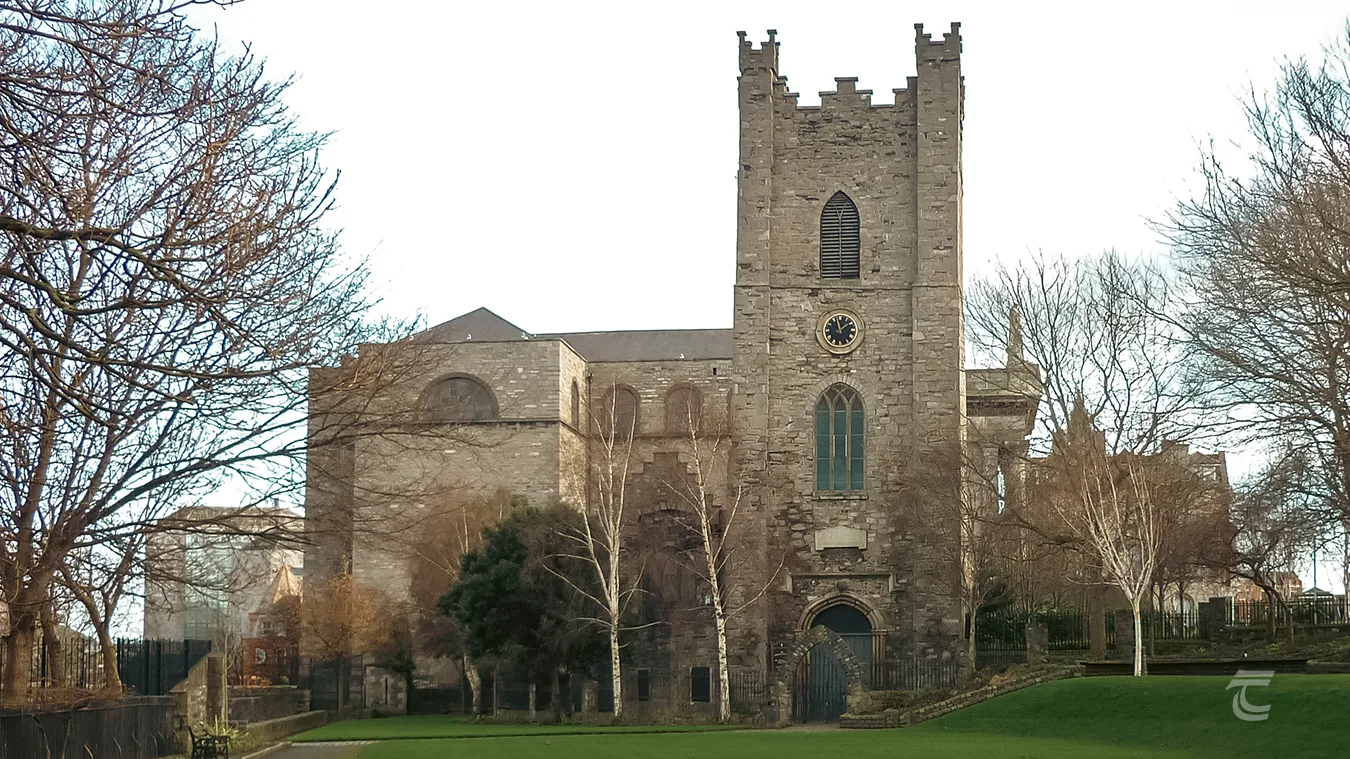
St Audoen’s Church • Dublin
The Changing Fortunes of St. Audoen’s
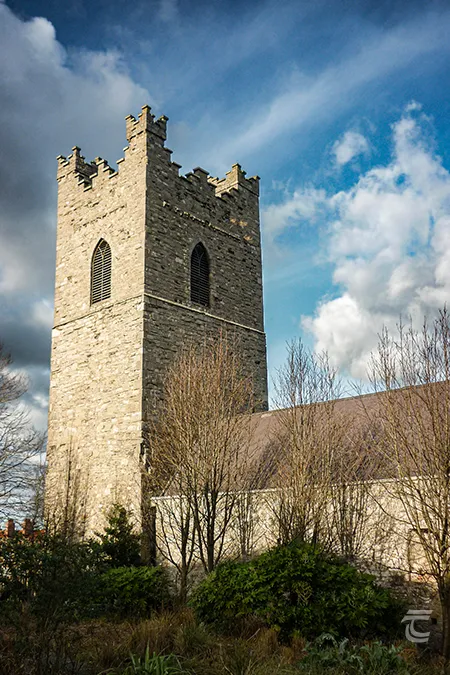
The tower of St Audoen’s • Dublin
St. Audoen’s Church prospered during the medieval period, so much so that in 1430 the Guild of St Anne was established in the parish. The guild had many wealthy patrons, and they maintained five altars in St Audoen’s, mainly concentrated at the southern end of the aisle. When the church was severely damaged by a gunpowder explosion at Wood Quay in 1597, it was the Guild of St Anne who donated the funds to pay for the reconstruction and repairs.
The church is also home to the private chapel of Sir Rowland FitzEustace. He was also known as Lord Portlester, and was appointed Lord Chancellor of Ireland by King Edward IV in 1474. He had a colourful life, but fell out of royal favour with King Henry VII when FitzEustace took part in the coronation of the pretender Lambert Simnel. Today you can visit the beautiful memorial to Sir Rowland and his wife Margaret in his private chapel at St Audoen’s.
Although St Audoen’s largely survived the full effects of the Reformation in the middle of the 16th century, it began to fall into disrepair, and by 1630 it was declared to be in “a decrepit state”. Efforts were made to repair the roof and structural pillars of the church, though funds were low and the work could not reverse the ravages of time. In 1673 an order was made to remove the tombs and tombstones from the church ‘to preserve the living from being injured by the dead’. By 1825 the church was in a completely ruinous state, parts of the church were unroofed to salvage the materials like lead causing many of the old tombs were damaged by weathering.
However in 1866, an architect Thomas Drew, began to inform people of the historical and architectural importance of St Audoen’s, and again efforts were made to preserve the site. In the 1980s a series of restoration works on the tower and bells were conducted and St. Annes chapel was converted to a visitor reception area. Extensive excavations of the site were carried out in the 1990s and they revealed a wealth of information about the site. Today St Audoen’s is an OPW heritage site and is a wonderful place to visit immerse yourself in the story of medieval Dublin.

The tower of St Audoen’s • Dublin
Upper left: the mid-14th century chancel and south aisle • Lower left: an 18th century memorial plaque • Right: a medieval graveslab
Top: the mid-14th century chancel and south aisle • Middle: a medieval graveslab • Bottom: an 18th century memorial plaque
